 Congrats! You’ve decided to take charge of your pet’s dental health and get their teeth cleaned! Keeping your pet’s teeth and gums clean and healthy can help to prevent periodontal disease and other serious health problems down the road. Here’s what you can expect when your pet gets a dental cleaning. Before the procedure You and your veterinarian will discuss your pet’s medical history and your vet will perform a complete physical exam. They may also take a sample of blood (and possibly urine, too) for a laboratory work-up. Your vet will discuss possible procedures to identify and treat the underlying dental problems including dental cleaning or scaling, periodontal probing, dental x-rays, and others. They will also polish the teeth to provide a pearly white smile! Your veterinarian will give you exact instructions, but you may be asked to withhold food from your pet the evening prior to the procedure to reduce the chance that your pet may vomit during the procedure. The duration of time recommended will vary depending on your pet’s age, pre-existing medical conditions, or any medications they are on. During the procedure Unlike when you go to the dentist, to get the best evaluation and dental care, our pets need to be anesthetized during their dental procedure. Anesthesia is necessary because it allows your pet to be still so your vet can conduct a thorough examination of the whole oral cavity (including below the gumline), take x-rays (to look for “hidden diseases”), and fully and safely clean your pet’s teeth. This also ensures a safe and comfortable experience for your pet by reducing their level of anxiety, stress, and pain. In addition, it protects their airway from any water or debris caused by scaling away the dental plaque that might otherwise find its way down into your pet’s lungs during the procedure. Expect to drop your pet off at the veterinary clinic early to get them settled in and have their pre-anesthesia exam. Your vet may administer “pre-meds” (medications that can help to decrease anxiety, pain, vomiting, and even the amount of other drugs needed to provide general anesthesia). Your veterinarian may also give your dog a medication to prevent vomiting and help them return to eating sooner after the dental procedure is completed. During the dental procedure, your vet will remove plaque and tartar from the teeth and polish them. They will also use a dental probe (like the one your dentist uses on you) to look for pockets of infection around the tooth roots and in the gum. This lets them check the health and stability of the dental ligaments and bony structures beneath the gumline. Dental x-rays may be recommended to fully evaluate the periodontal health of your pet’s mouth and to make sure that no “hidden” disease is present and waiting to flare up (like brewing tooth root infections or resorbed tooth roots). If your veterinarian finds damaged teeth, they may recommend extractions (removing the teeth) or other procedures as necessary. After the procedure After your dog or cat’s dental procedure, your veterinarian or veterinary technician will review everything that was performed during the dental procedure with you. If there is an infection or if your pet has an underlying condition that makes them more susceptible to infection, your vet may give or prescribe an antibiotic. Pain medication may also be provided as there can be some level of inflammation and discomfort following a dental procedure. Your vet may prescribe or send you home with:
An anesthetized dental procedure with your veterinarian is just one step to ensuring a healthy mouth for your pet. Your vet will go over best methods of at- home dental care going forward after the procedure. *This blog post is courtesy of the Zoetis Pet Care, Health and Wellness team. Original Author: Dr. Joyce A. Login*
11 Comments
 It's a common scenario in our business--people come in with a dog or cat they just found (or, as some say, who found them!) and they want to know what to do. Many people in this situation are ready to take on this new project and add the new guy to the family. Sometimes the finder is not necessarily in the market for a new pet, but worried that taking the foundling to the local shelter will end up with them being euthanized, and this makes them understandably reluctant to report the pet as "found." Others are concerned with the sorry state of the pet when it was found, and assume the previous owners mistreated or abandoned the poor thing, but often this isn't true! What should you do, then, if you find a dog or cat without a collar tag in sight? A good mantra to remember is "Assume LOST, not ABANDONED," and give the previous owner the benefit of the doubt and a chance to reunite with Fluffy. Here' are some steps you can take when you find a lost pet: A great first step is to take the pet to a professional who can scan the pet for a microchip. A microchip is a small ID tag, the size of a grain of rice, implanted in the skin between the shoulder blades. If it is registered to an owner and their contact information is current, the pet can be returned! Sometimes a pet can be lost for months or even years, and be far from home, or in pretty bad shape, but still have an owner looking for them. Pet microchip numbers can be searched at www.petmicrochiplookup.org. If you want to get your dog or cat outfitted with a microchip, give our office a call for an appointment. Many municipalities have a mandated "holding period" where an animal suspected of having an owner must be held for a certain number of days before a new owner can be legally declared. In our area, that is 30 days. This waiting period gives the owner a chance to come forward and claim their pet. This means, if you find a lost or stray pet, you should report it to the local Animal Control so they can have a record of the pet being found, in case someone comes looking for them. They will be able to help you decide if the pet should be brought to the shelter for holding, or if you can "foster" it until an owner comes forward, or the waiting period is up. Old-fashioned flyers on telephone poles, door-to-door canvassing in the local area, and posting on social media are all good ways to get the word out about your new project. Other places to post flyers include local veterinary offices and the local shelter. Maybe Fluffy really does need a new home, and is happy to have found you! But, before everyone settles in, make sure you've done what you can to get them back to their family, just like you would want if your pet went missing. Spring is in full swing in the North Bay, which means the old adage “April Showers bring May Flowers” is truer than ever. Our furry friends may become targets, of sorts, to some of our favorite flowers and plants very soon. It’s a good idea to familiarize yourself with certain common household plants that may be toxic to your pets and avoid adding distress to your summer plans!  Many green-thumb gardeners are aware that lilies are some of the most toxic flowers to our pets that we may grow in our garden, but issues often arise when someone receives a bouquet and unwittingly exposes their inquisitive housecats. The lily family includes Easter Lilies and Tiger Lilies, as well as the rest of the flowers in the genus Lilium. These plants cause irreversible kidney failure in cats who ingest even a small amount of pollen, petals, or leaves, so we recommend that no lilies be brought into a house with cats. Interestingly, Lily of the Valley is also very toxic, though it is not in the lily family.  Other common plants that are toxic to our pets are tulips (especially the bulbs), irises, morning glory, wisteria, foxglove, Sago palms, azaleas, and hydrangeas, as well as many others too numerous to name. If you’re not sure if a plant in your yard or house is toxic, the ASPCA Poisonous Plants website is an excellent resource. Common signs that your furry friend might have eaten something toxic are a noticeable lack of energy or lethargy, vomiting, diarrhea, lack of appetite, and abdominal pain. If you are concerned your pet may have eaten a toxic plant, you can call the ASPCA Animal Poison Control Center at (888) 426-4435 for advice ($65 fee) as well as calling our office, or the Solano-Napa Pet Emergency Clinic if we are closed. We hope that if we remain aware of our gardens, our pets, and what they put in their mouths, the coming months are sure to be a beautiful sight for all!
 Dr. Woodall donates her time to International Veterinary Outreach, a non-profit organization run by veterinarians and other professionals working together in different communities around the globe. Dr. Woodall enjoys working with IVO because it allows her to make a difference for animals in communities that don’t normally have access to full-service veterinary care, whether abroad or closer to home. After graduation, Dr. Woodall stayed on with the organization and became the project manager for their Bay Area project, which partners with Oakland Animal Services to help provide surgery for shelter cats. This project has reduced the burden on the shelter, and also decreases the amount of time the cats spend in the shelter before they can be placed for adoption. In the future, IVO hopes to expand this project in order to provide basic medical care, such as vaccines and spay/neuter, for low-income residents of Oakland.
You can read more about IVO’s mission, history, and current projects at ivetoutreach.org. Dr. Stambaugh here! My husband, who is also a veterinarian, and I recently had a baby of the human variety! As a result, we have been showered with animal-themed children’s everything. Today, we are sharing our current dog-themed favorites from the bookshelf. Walter the Farting Dog |
Author
Our technicians and doctors write posts for this blog, hoping to keep our clients informed and entertained. We hope you find their topics helpful and fun to read about! Archives
December 2019
Categories |


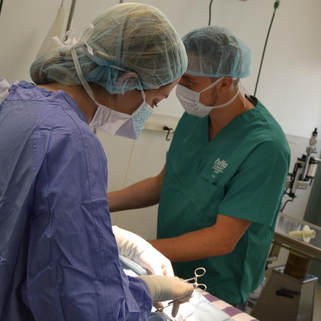





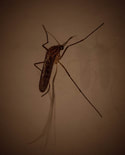
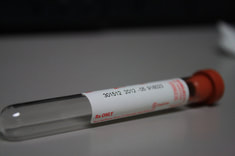

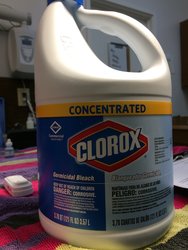

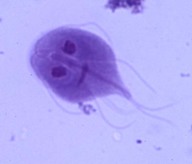


 RSS Feed
RSS Feed



